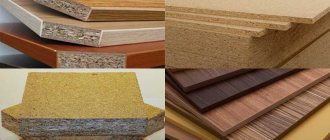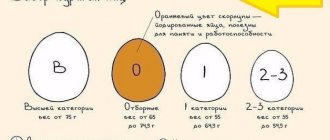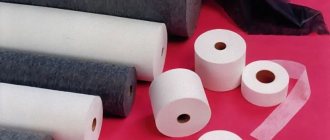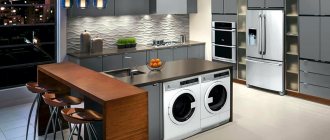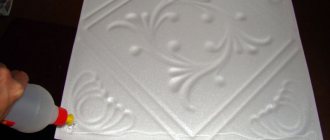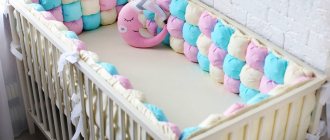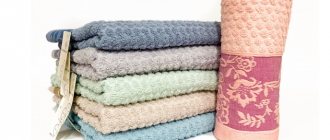Kitchen flooring is selected especially carefully, because it should not only be beautiful and aesthetically pleasing, but also durable and practical in everyday life. Linoleum for the kitchen not only meets the listed characteristics, but also has additional qualities that make it an excellent solution for the most used room in the apartment. We will tell you in this article how to choose the right linoleum, what types exist, and what to pay attention to when laying it.
Types and resistance class
There are several types of waterproof linoleum for the kitchen, which differ in composition and manufacturing technology. Its purpose and resistance class depend on its technical characteristics.
By appointment it happens:
- Household – for residential buildings;
- Commercial and semi-commercial – for public institutions;
- Industrial – for industrial premises.
The resistance class is determined by the degree of load that the floor covering can withstand. Today there are 4 degrees of resistance:
- Short;
- Average;
- High;
- Maximum wear resistance.
Expert advice
Ksenia Lavrova
Ksenia – flooring sales consultant
The resistance class correlates with the purpose: low is intended for residential premises, medium – for offices, high – for industrial facilities.
Products are marked with numbers from 21 to 43. Accordingly, the higher the number, the more durable and wear-resistant the product is.
The best option for the kitchen would be linoleum with resistance class 21-33.
In this case, it is best to choose a coating of at least 23 wear resistance class, designed for high-intensity, regular use. The most durable linoleum for the kitchen will be semi-commercial varieties (class 31-33), which are designed for maximum everyday load.
Manufacturers rating
Among the manufacturers the best are considered:
- Gerflor. The products are distinguished by good wear resistance and are among the TOP 3 market leaders in durable coatings.
- Creates natural linoleums.
- Juteks. The concern includes several brands (including Ideal, Beauflor).
- Grabo. High quality, safe products from Hungary.
- Forbo. Environmentally friendly, natural linoleums.
- Komitex LIN. Budget material from the Russian manufacturer.
- Tarkett. 130 years on the market, N1 leader in technical characteristics and sales in Russia, PVC products.
Choice of colors
The most popular colors are imitation wood, stone, marble, parquet, boards, laminate. But options with patterns and ornaments can also be considered, especially in interior design in vintage and retro style.
The choice of color scheme depends on the area of the room, its design and decoration. For example, the floor can match the color of the baseboards or door frames and window frames, but this is not essential.
Designer tips
Elena Vasilyeva
Elena is an interior designer, founded her own design school in 2014
It is not recommended to match the floor tone to furniture or curtains, as this will lead to color redundancy and disharmony. But the overall color palette of the room should be taken into account so that the floor does not stand out from the decor.
If the room is decorated in warm colors, choose light linoleum for the kitchen in warm colors, which not only add coziness to the room, but also go well with the interior in a country or classic style.
Minimalism, hi-tech and other ultra-modern styles are characterized by a cool color scheme. If you have a gray, black or white kitchen, dark linoleum for the kitchen in gray, light blue or blue tones will look good.
Designer tips
Elena Vasilyeva
Elena is an interior designer, founded her own design school in 2014
When choosing a design, consider not only the style, but also the size of the room. A motley floor will make a small room visually smaller, so it’s better to go with a plain option or a calm wood-like color.
In a large or kitchen-living room, you can afford linoleum under tiles with colorful designs, designs or patterns. But at the same time, the decoration and furniture should be monochromatic.
Dimensions
Linoleum is usually sold in rolls, with coating thickness varying from 0.7 mm to 4.5 mm and width from 2 to 5 m.
For the kitchen, the optimal thickness is 1.5–3 mm. Wear resistance does not depend on the size of the substrate, but only on the thickness and material of the top layer.
The width of the rolls is chosen depending on the size of the room. In small kitchens, for example, it is advisable to lay the material “in one piece”.
It is important to remember about transportation. If you decide to install a covering in the kitchen without joints, then it is not a fact that a dimensional roll of 4-5 m wide will be able to be delivered to a high-rise apartment without any problems.
Final verdict
Whichever option you prefer, when choosing linoleum for the kitchen, pay attention to the following points:
- The presence of a protective layer that protects the coating in the event of sharp objects falling on it. He should not be afraid of a broken plate or a knife sliding off the table. Conscientious manufacturers place the appropriate markings on the reverse side of the fabric or indicate the necessary information in the accompanying documents.
- High moisture resistance and low hygroscopicity. To maintain order in the kitchen, wet cleaning should be carried out regularly. This procedure should not adversely affect the condition of the floor covering. Therefore, rough, and even more so porous, linoleum is not the best option to choose.
- Sufficient width of the canvas. Ideally, a kitchen should have no joints between parts of the flooring at all. After all, dirt will certainly begin to accumulate in them. It is better to purchase material of excess width, sending the excess to waste, than to deal with undesirable consequences. You will lose this battle.
If you do everything correctly, the linoleum you choose for the kitchen will last a long time without creating problems for the owners of the house or apartment.
Design solutions
A pattern that imitates boards, parquet or laminate is ideal for the kitchen. Monochrome solutions in light colors look no less stylish. This option is ideal for Scandinavian style or minimalism.
Wood-look linoleum will make the decor more noble; it will fit perfectly into a classic interior with solid wood furniture.
Stone and marble finishes are organic in bright interiors in a modern or neoclassical style.
Light monochromatic options are suitable for small rooms, and bright ones are suitable for fashionable design in fusion, retro or vintage style.
Features of linoleum
Since its appearance in stores, linoleum continues to be popular due to its technical characteristics. In addition to price and quality, it has strengths and weaknesses. Therefore, before purchasing flooring, you should familiarize yourself with its features. Like any artificial material in Russia and Europe, linoleum is manufactured according to international GOST 7251-77.
The packaging or material always bears the UPEC marking, which determines the reliability of the coating:
- resistance to abrasion and chemical treatment;
- permanent deformation;
- moisture-repellent properties.
According to experts, the higher the index number on the marking, the better the quality of the floor covering.
The length and width of the rolls are made to order. High-quality and long-lasting linoleum should be:
- waterproof;
- dense;
- fireproof;
- heat and sound insulating.
Also, this material should not emit harmful substances. And the color, style, texture and pattern are chosen based on the interior of the kitchen
Floor preparation
Linoleum can be laid on any flat base, including OSB boards, boards, concrete screed or old flooring, such as laminate or parquet. The key point is to level the floor for installation. The smoother the base, the more beautiful the future floor will look and the longer the finish will last.
Expert advice
Ksenia Lavrova
Ksenia – flooring sales consultant
If there are defects on the concrete screed, it is best to eliminate them by rubbing. Any bulges or depressions will be felt under the thin surface, which will cause inconvenience in everyday use. It is recommended to pour a self-leveling floor under the ultra-thin coating to make the surface perfectly flat. The joints between boards or sheet materials should be puttied to minimize the slightest defects on the surface of the future floor.
Laying linoleum
Before laying, the floor must be leveled and cleared of construction debris and dust, and allowed to dry from putty and moisture. Then you should choose one of the installation options :
- Screed with skirting boards;
- Gluing with double-sided tape;
- Using glue.
The first option is suitable for small spaces where installation in one piece is possible. In large rooms, the reliability of such fastenings will be quite low.
The next two options provide a tighter fit, which means durability, smoothness and strength of the coating.
So, let's look at how to put linoleum in the kitchen using tape or glue:
- Leave the new rolls indoors for a day.
- Roll out the rolls and join them, trim off the excess parts near the walls and corners.
- Roll the covering to the middle of the room and apply tape or glue to the exposed part of the floor.
- Gently roll the rolls over the adhesive surface, smoothing them out to prevent wrinkles and bubbles.
- Fold down the non-glued side and apply glue or tape to the subfloor to then glue down the rest of the roll.
After the glue has dried, skirting boards are installed around the perimeter, which make the floor more aesthetically pleasing and the design complete.
Additional protective layer
Additional protection can also be provided on top of the transparent layer. For example, the surface is treated with glossy or matte varnish, which protects the coating from excessive contamination and greatly facilitates the cleaning process. Glossy varnish gives the floor an effect like after wet cleaning. The advantage of this treatment is that the thickness of the kitchen linoleum will not increase after varnishing.
Another interesting means for treatment are substances that protect coatings from the formation of bacteria and fungi. It is best to use natural antiseptics for such purposes, which will additionally disinfect the air in the room. The most prestigious method of antibacterial treatment is the addition of silver particles to the surface layer, which release ions into the air and prevent the proliferation of microorganisms.
Linoleum under the “warm floor” system
The heat resistance of a material directly depends on the raw materials from which it is made. There are 4 main types of coatings for residential buildings:
- PVC (vinyl) - with a synthetic top layer that is resistant to water, coloring chemicals and heat, which allows it to be laid on a “warm floor” system. But vinyl can only be heated to 29-30 degrees. At higher temperatures it begins to deform.
- Alkyd - made from fabric-based resin. It has a high degree of heat and sound insulation, but requires careful handling during installation and operation due to its increased fragility. When heated, it deforms.
- Nitrocellulose is an option for perfectly smooth floors, as it has no lining and is not suitable for apartments or houses where floor insulation is required. The material is highly flammable and therefore not suitable for kitchens or under heated floors.
- Natural – made from cork, resin, lime and vegetable oils. The key advantages are environmental friendliness, fire resistance, and antistatic properties. The coating can only be heated up to 27 degrees, after which it begins to lose its shape.
Expert advice
Ksenia Lavrova
Ksenia – flooring sales consultant
Natural linoleum is ideal for heated floors, as it does not emit toxic substances when heated, does not ignite and tolerates temperature changes well.
If you're on a budget, you can use vinyl on a thin backing. But remember that it can release toxins and smell bad when heated.
Kitchen flooring requirements
The first thing to consider is that the kitchen is the place where there is the most movement in the house. While food is being prepared and served, many feet are walked around the kitchen, and often even after dinner someone keeps coming into the kitchen to the refrigerator.
The second important detail is temperature changes, increased humidity and evaporation in the kitchen. And kitchen floors can sometimes become completely accidentally contaminated by hot grease splashing from frying pans.
Basic requirements for kitchen flooring:
- Moisture resistant and hygienic. It should be possible to regularly wet clean linoleum using detergents.
- Non-hygroscopic. Does not absorb moisture.
- Should not be slippery even when washing floors.
- Resistant to bacteria and insects.
- The surface must be resistant to abrasion.
- Durable so that a knife or fork falling on the floor will not damage it.
- Covering floor with a minimum number of joints and seams. The industry produces linoleum rolls up to 4 meters wide, so there shouldn’t be a problem with this point.
Care Tips
Linoleum for the kitchen is a practical, aesthetic and unpretentious coating that is easy to care for, which is why reviews about it are mostly positive.
It is enough to follow simple care tips to maximize the service life and preserve the appearance of the floor covering for many years.
To make linoleum last a long time:
- use furniture with wide wooden legs that do not leave dents on the surface;
- do not drag furniture or other heavy objects to avoid leaving streaks and scratches;
- remove dirt promptly, as vinyl quickly absorbs stains;
- do not use bleaches or abrasives when cleaning;
- If there are open seams on the covering, make sure that no water gets inside, otherwise mold will appear.
Natural material should be treated exclusively with soapy water. Vinyl surfaces can be cleaned with household chemicals and various polishes can be used for shine.
Anti-slip properties
Material with added anti-slip components
Linoleum coating becomes slippery when wet. The “slipperiness” of linoleum is given by a protective polyurethane coating. The protective coating gives the material strength and resistance to mechanical damage. Therefore, to give linoleum anti-slip properties, special abrasive components are introduced into the composition.
Such components are granules of metal, corundum, and abrasive sand. Abrasive components are introduced into the liquid composition of the protective layer, forming relief embossing on the surface.

